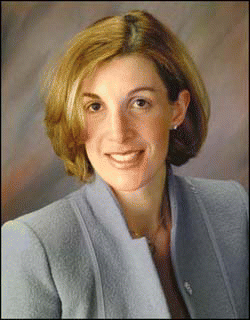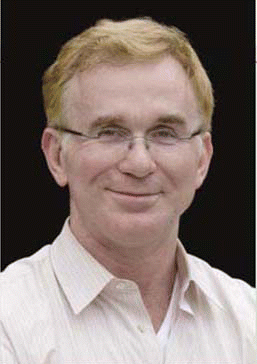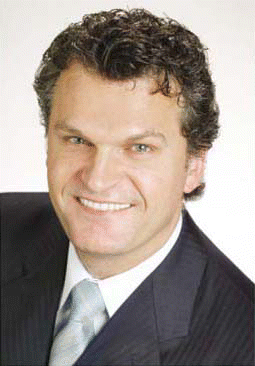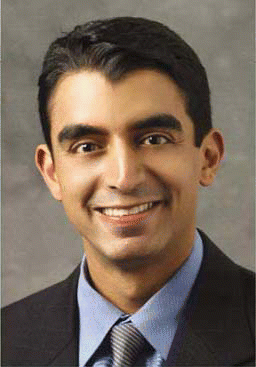Physicians are changing the way they think about rejuvenating the aging face. Patient options are no longer limited to injection of foreign fillers, surgical tissue removal, or tightly stretched skin. Increasingly, surgeons are choosing to inject autologous fat to plump up and restructure facial volume.
Explore This Issue
May 2006An often used analogy is the youthful grape and the aged raisin.
Why cut the raisin down to a pea; that doesn’t look like a grape, said Samuel Lam, MD, an otolaryngologist-head and neck surgeon and facial plastic and reconstructive surgeon at the Lam Facial Plastic Surgery Center in Plano, Tex. You need to re-inflate it back to a grape.
Laxmeesh Mike Nayak, MD, Assistant Professor of Otolaryngology-Head and Neck Surgery and Chief of Facial Plastic and Reconstructive Surgery at St. Louis University (Mo.), concurs. You can’t just cut away ‘extra’ skin; you have to re-inflate it to replace the lost volume. Fat’s role is to plump up areas that have hollowed over time.
But why has it taken so long for fat grafting to gain popularity with head and neck, plastic, and dermatologic surgeons? After all, the procedure is more than 100 years old, dating back to 1893 when Franz Neuber in Germany used a patient’s own fat to fill scarred tissue. Prior to the 1990s, however, few patients experienced long-lasting fat grafts, primarily due to adipose tissue damaged during high-pressure harvesting or harmful processing procedures such as washing and excessive exposure to air.
You have to place it in very small portions with each pass…If parcels of fat are touching each other, there is no way for the blood supply to get to the middle of that clump. – -Sydney Coleman, MD
Modern Techniques Mitigate Problems
Sydney Coleman, MD, Clinical Assistant Professor of Surgery at New York University and a private practice plastic surgeon in New York City, is considered a pioneer in modern fat grafting techniques. In the early 1990s, he perfected a method of negative-pressure harvesting by hand with a 10 mm syringe and blunt cannula, processing with a short standing time and gentle centrifuging, and injection of minute amounts of fat in multiple passes.
You have to place it in very small portions with each pass, he said. That’s probably the most significant thing I figured out. Not just a big glob of fat next to other fat, but small portions placed close to capillaries. If parcels of fat are touching each other, there is no way for the blood supply to get to the middle of that clump.
 Suzan Obagi, MD, said that fat grafting facial rejuvenation should not be used with smokers, due to vascular constriction, or with individuals who take blood thinners, since bleeding may occur in the transfer area, killing the fat.
Suzan Obagi, MD, said that fat grafting facial rejuvenation should not be used with smokers, due to vascular constriction, or with individuals who take blood thinners, since bleeding may occur in the transfer area, killing the fat.Although some facial plastic surgeons have claimed that fat longevity is short because the transplanted tissue is quickly reabsorbed by the body, Dr. Coleman and others have experienced otherwise. He said that his patients 11 and 12 years out from their procedures still show improvement.
When it’s done correctly and done over the entire face or to fill in hollows, it is a permanent filler, said Thomas Tzikas, MD, a private practice otolaryngologist and plastic surgeon in Delray Beach, Fla. I’ve got patients I’ve seen eight to nine years after and they’ve still got the majority of fat in place.
Advantages, Disadvantages, and What about Hyaluronic Acid?
The greatest advantage of fat grafting is its safety as an autologous product. It’s also less expensive than other injectable fillers such as the hyaluronic acids Restylane and Hylaform.
Fat and Restylane are both good fillers, Dr. Nayak said. Restylane can do some things that fat can’t, like fill finer wrinkles and upper lip lines. However, Restylane is very pricey ($500/cc on average), compared to fat, and lasts four to eight months on average. So, it’s pretty price-prohibitive for someone who needs 15-30 ccs of volume re-expansion in their face.
What I do with fat is use it many times as a whole facial rejuvenation rather than just for filling in labial folds or lips, where it is less effective, Dr. Tzikas said.
Suzan Obagi, MD, Assistant Professor of Dermatology and Director of the Cosmetic Surgery and Skin Health Center at the University of Pittsburgh (Pa.), has worked with fat augmentation for nearly six years. She said that although 80% of her facial rejuvenation patients elect fat grafting over other procedures, the technique should not be used with smokers, due to vascular constriction, or with individuals who take blood thinners, since bleeding may occur in the transfer area, killing the fat. She also has gotten better results with normal weight individuals than people who are extremely thin.
Minimizing Recovery Time
Patient recovery time is another consideration for facial surgeons considering fat grafting. When multiple passes are used to inject fat, swelling and bruising can last from days to a couple of months, depending upon the patient.
When it’s done correctly and done over the entire face or to fill in hollows, it is a permanent filler. – -Thomas Tzikas, MD
A lengthy recovery time is unacceptable to the patients of Richard Ellenbogen, MD, a private practice plastic surgeon at Beverly Hills Body in California. Dr. Ellenbogen is considered by many as the father of modern fat grafting, having developed a procedure called pearl fat grafts in 1986. Over the years he has refined his technique, but he disagrees with Dr. Coleman’s use of multiple passes.
We teach a course at the American Society of Aesthetic Plastic Surgery on faster healing techniques, he said. For someone to be happy with their plastic surgery, it has to heal quickly, be relatively painless, and it has to look natural. In California, we use as our criteria that they have to be able to take a shower and wash their hair, drive their car, and go back to the gym.
To achieve this, Dr. Ellenbogen and his colleagues use a minimal number of passes. In addition, he uses general rather than local anesthesia because locals break down the fat, and anti-inflammatory steroids to prevent swelling and increase the take of fat.
Fat Grafting Basics
An outpatient procedure, fat grafting involves careful harvesting, sterile transfer and purification, and gentle placement next to a blood supply.
Following sterile preparation of the harvest site (usually the abdomen or thighs), a local anesthesia is administered for a small stab incision. The harvesting device used by Dr. Coleman is a 10 mL disposable Luer-lock syringe attached to a two-holed blunt cannula. Suction is hand-applied-not mechanically vacuumed-by slowly withdrawing the plunger.
Next, the fatty tissue is carefully transferred and purified. The cannula is disconnected from the Luer-lock and capped. The plunger of the syringe is removed and the capped 10 mL syringe is placed in a sterilized sleeve in a sterilized central rotor of a centrifuge, and spun at about 3000 rpm for two to three minutes.
The fatty tissue separates into three layers: the top composed primarily of oil, the bottom almost entirely of blood and lidocaine or Ringer’s lactate, and the middle layer primarily of usable subcutaneous tissue. While some physicians wash, whisk, or strain the fatty tissue, Dr. Coleman said these techniques will damage the fat.
You can’t just cut away ‘extra’ skin; you have to re-inflate it to replace the lost volume. Fat’s role is to plump up areas that have hollowed over time. – -Laxmeesh Mike Nayak, MD
Fat placement should occur at the time of harvest to a well-vascularized bed to maximize graft take. Every part of the graft should be within 1.5 mm of living, vascularized tissue, wrote northern Virginia plastic surgeon Wendy Gottlieb, MD, in an eMedicine article titled Facial Fat Grafting (www.emedicine.com/plastic/topic59.htm ). She recommends small tracks for the grafts and says to insert the cannula either over a bevel-tipped needle or through a 1- to 2-mm stab incision, injecting fat in a gently controlled method.
Dr. Coleman uses an 18-gauge cannula which he says is designed to reduce clogging and trauma to the parcels of fatty tissue. The distal end is blunt and the cannula is connected to a 1 mL or a 3 mL syringe filled with refined fatty tissue. One of the keys to Dr. Coleman’s procedure is multiple passes for fat placement.
To make fat survive in the face and to really give a smooth and viable result, you need at least 30 passes to put in 1 mL, Dr. Coleman said. When you get near the eye, you need at least 50 passes to put in 1 mL.
Another method of fat transfer has been developed by French surgeon Roger Amar, MD, who has a clinic in Marabella, Spain. Noting that survival of fat transplants depends mainly on the vascularity of the host tissue and less on harvesting and reinjection methods, Dr. Amar places larger volumes of harvested fat tissue deep into the vascular muscle bed and under the periosteum of the skull.
The Future for Fat
I think more physicians are starting to do fat grafting, Dr. Tzikas said. I’ve been lecturing at academy meetings over the last six years and a lot of people have converted to this procedure. One problem, however, is the high learning curve; it takes a few years for someone to become proficient.
Dr. Lam said he thinks too many physicians are ignorant of fat. They don’t know how to use it, they don’t think it will last, or they are worried about the artistry involved.
The author of a new how-to book, Complementary Fat Grafting (Lippincott Williams & Wilkins 2006), Dr. Lam said the procedure can be learned in a day, but it’s perfected over a year as physicians move from empiric knowledge to refined technique and advanced skills.
While fat grafting has been gaining popularity with patients and surgeons alike, it may attract even more attention in the near future if research with fat stem cells proves benefits beyond plumped-up faces.
I’ve noticed for 25 years that when we inject someone with fat, their pores get smaller, their pigmentation gets lighter, even women who were subject to adult acne stopped having outbreaks, said Dr. Ellenbogen. We didn’t know what caused this, but recently we’ve learned it comes from the stem cells within fat. This is what has made people’s skin so wonderful after fat transfer.
Although more research needs to be done with fat stem cells, the next decade will likely see increased numbers of surgeons-including otolaryngologists-head and neck surgeons-utilizing fat grafting for facial rejuvenation.
©2006 The Triological Society



Leave a Reply